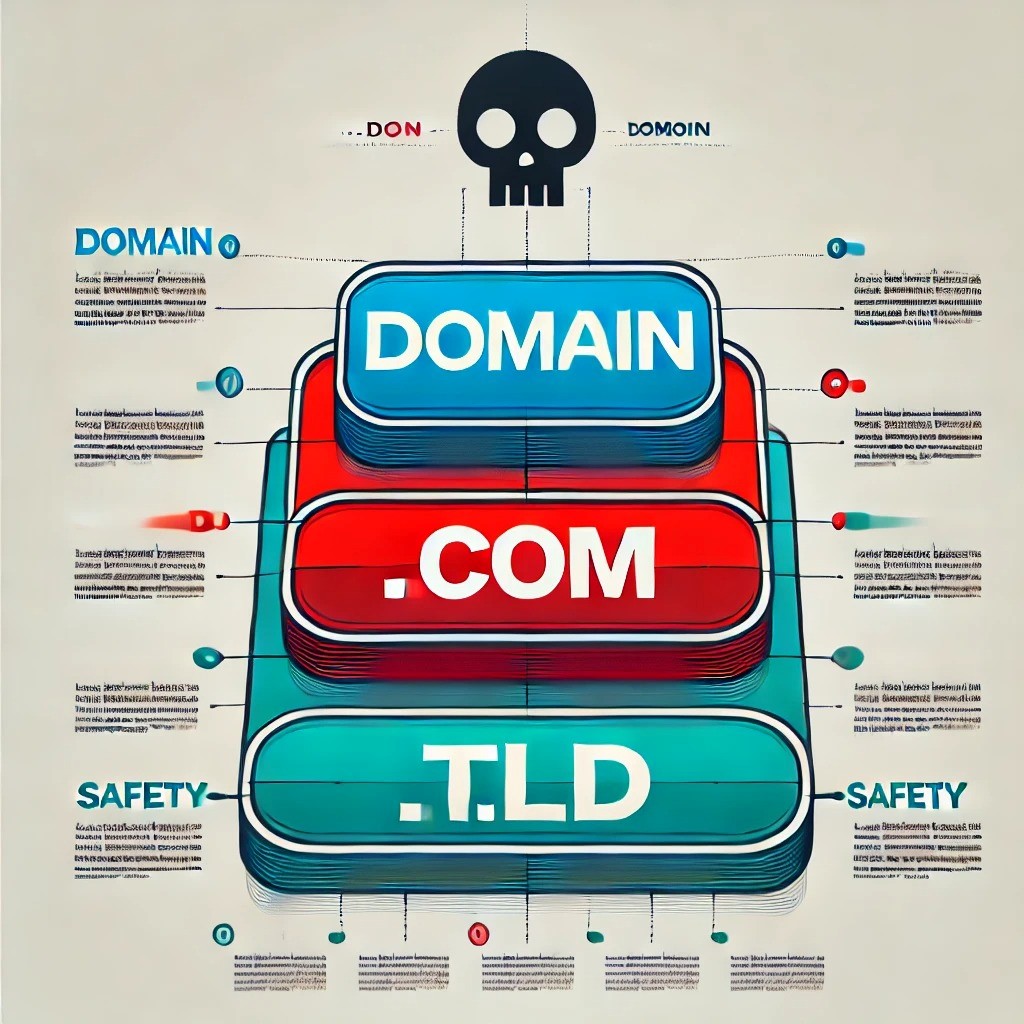
Introduction
A company's domain name is a cornerstone of its online identity, often representing its brand, trust, and reputation. The Domain Name System (DNS), which translates human-readable domain names into machine-readable IP addresses, organizes domain names into hierarchical levels. At the apex is the Top-Level Domain (TLD), a crucial component of every domain name.
The failure to secure a domain name across multiple TLDs creates vulnerabilities, exposing organizations to threats such as TLD hijacking or typosquatting. These attacks exploit inconsistencies in domain registrations to deceive users, host malicious content, or impersonate a brand. This article provides an in-depth exploration of TLDs, examples of common TLDs, and the risks and prevention strategies associated with TLD hijacking.
Understanding Top-Level Domains (TLDs)
CrowdStrike, founded in 2011, is a cybersecurity firm known for its cloud-native platforms that protect businesses from cyber threats. Its core product, the Falcon platform, is widely used across various sectors, including Fortune 500 companies, banks, and healthcare providers, to safeguard against cyberattacks.
The Situation: What Happened?
What is a TLD?
A Top-Level Domain (TLD) is the final segment of a domain name, located to the right of the last dot. For example, in the domain name example.com, the TLD is .com. TLDs are an integral part of the DNS hierarchy, determining a domain's nature or geographical association.
Categories of TLDs
TLDs are broadly categorized as follows:
- Generic Top-Level Domains (gTLDs):
- Represent general-purpose domains.
- Examples: .com, .org, .net.
- Widely used for commercial, organizational, and networking purposes.
- Country Code Top-Level Domains (ccTLDs):
- Represent specific countries or geographic regions.
- Examples: .us (United States), .uk (United Kingdom), .sa (Saudi Arabia).
- Often used by entities operating within a specific country.
- Sponsored Top-Level Domains (TLDs):
- Organizations sponsor restricted domains for particular purposes or communities.
- Examples: .gov (government), .edu (education), .mil (military).
- New Generic Top-Level Domains (ngTLDs):
- Introduced to expand domain options and include industry-specific or creative extensions.
- Examples: .app, .shop, .tech.
TLD Hijacking: A Security Threat
What is TLD Hijacking?
TLD hijacking occurs when an attacker registers a domain name identical to a legitimate one but under a different TLD. For instance, if a company owns example.com.sa but neglects to register example.com, an attacker can register example.com to impersonate the legitimate business.
This attack exploits the decentralized nature of domain registrations, where ownership of a domain under one TLD does not automatically grant ownership under other TLDs.
The Relationship Between TLD Hijacking and Typosquatting
While TLD hijacking targets inconsistencies in TLD registrations, typosquatting leverages errors in domain entry, such as:
- Misspellings (e.g., exampel.com instead of example.com).
- Using incorrect TLDs (e.g., .com instead of .org).
Both approaches aim to mislead users, often for malicious purposes.
Risks Associated with TLD Hijacking
The exploitation of unclaimed TLDs poses significant risks, including:
- Phishing Attacks:
- Attackers can host fraudulent websites resembling the legitimate organization's website to steal sensitive information like usernames, passwords, and payment details.
- Malware Distribution:
- Malicious content, such as ransomware or spyware, can be distributed via hijacked domains, compromising users who trust the domain.
- Reputation Damage:
- Fraudulent activities conducted through hijacked domains can erode user trust in the brand, even if the legitimate organization is not at fault.
- Traffic Redirection:
- Attackers can redirect web traffic to competing or malicious websites, leading to revenue loss or reputational harm.
- Email Spoofing and Fraud:
- Hijacked TLDs are often used to send fraudulent emails, impersonating legitimate organizations to deceive customers or partners.
Preventive Measures for TLD Hijacking
To mitigate the risks of TLD hijacking, organizations should adopt a comprehensive domain security strategy:
- Secure Key TLDs
- Register the primary domain name across commonly used TLDs (.com, .net, .org) and region-specific ccTLDs where the business operates (e.g., .sa for Saudi Arabia, .uk for the United Kingdom).
- Prioritize TLDs that are relevant to your brand and industry.
- Domain Portfolio Management
- Conduct regular audits of your domain portfolio to identify gaps or unregistered TLDs.
- Use domain registration tools to claim new TLDs that may become available preemptively.
- Enable DNS Security Extensions (DNSSEC)
- Implement DNSSEC to authenticate DNS records and protect against domain spoofing.
- Monitor Domain Registrations
- Use domain monitoring services to track new registrations similar to your domain name.
- Act quickly to reclaim or challenge malicious domain registrations through dispute resolution policies, such as the Uniform Domain-Name Dispute-Resolution Policy (UDRP).
- Educate Stakeholders
- Train employees, customers, and partners to recognize phishing attempts and verify the authenticity of domain names before interacting.
- Leverage Domain Locking
- Enable domain locking features to prevent unauthorized changes to domain registration settings.
Real-World Example
Consider a multinational company operating under the domain brand.com.sa. If the company fails to register brand.com:
- An attacker could purchase brand.com and create a replica of the legitimate website.
- Customers visiting brand.com may fall victim to phishing scams or malware, associating the negative experience with the legitimate company.
- Fraudulent emails from contact@brand.com could deceive partners, leading to financial or reputational loss.
Conclusion
TLD hijacking is a sophisticated threat that exploits gaps in domain registrations across multiple TLDs. Organizations must proactively secure their domain names across relevant TLDs as the digital landscape evolves to prevent exploitation. A strong domain management strategy and technical safeguards like DNSSEC and monitoring can significantly reduce the risk of TLD hijacking.
By prioritizing domain security, businesses can protect their online identity, maintain user trust, and mitigate the risks of brand impersonation and malicious attacks.
